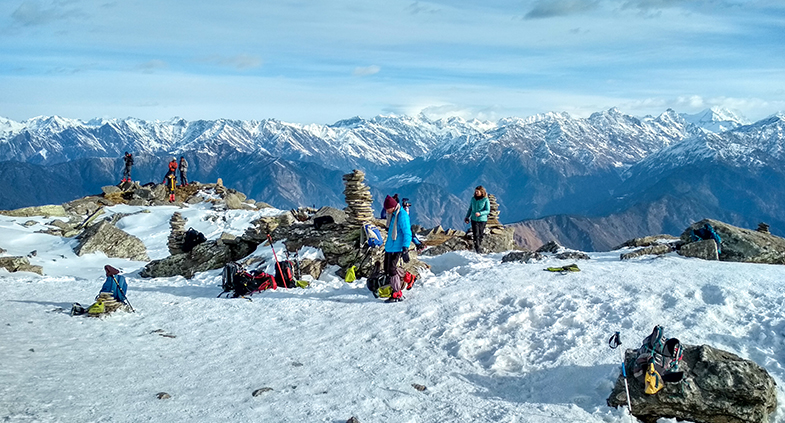Introduction
Kedarkantha is a beautiful peak located in the Indian state of Uttarakhand, known for its stunning views and challenging trek. Trekking to Kedarkantha in winter can be a unique and unforgettable experience, but it requires proper planning and preparation. It is a popular trekking destination,especially during the winter months when the snow-covered peaks make for an enchanting trekking experience. The trek offers a combination of beautiful landscapes, snow-clad peaks, and a chance to explore the local culture and tradition. It is a must-do trek for all the adventure enthusiasts looking for a challenging but rewarding experience. Here is a guide to help you plan your first winter trek to Kedarkantha.
Planning and Preparation
- First and foremost, Before planning your trek, it’s essential to check the weather forecast and trail conditions. The trek can be challenging due to heavy snowfall and low temperatures, so it’s essential to be prepared for the worst-case scenario.
- It’s important to be well-prepared for the cold weather. The temperature can drop to sub-zero levels at night. Make sure to pack warm clothing, including thermal wear, gloves, and a warm hat. It’s also a good idea to bring a pair of crampons and trekking poles, as the trail can be slippery due to snow and ice.
- It’s also important to be in good physical shape before attempting the trek. Training for a few weeks before the trek can help you acclimatize to the altitude and make the trek more manageable.
- Another thing to keep in mind is that the trek can take longer than usual due to the snow. It’s important to be mentally prepared for the trek to take an extra day or two, and to carry enough food and supplies to last for the extended duration.
The Trek Begins
- The trek to Kedarkantha starts from Sankri, a small village located in the western Himalayas. The village is the last inhabited village on the trek and is the starting point of the trek. The trail passes through lush forests, small villages, and meadows, offering beautiful views of the surrounding mountains. The trek is adorned with beautiful views of snow-covered peaks, frozen waterfalls and meadows covered in snow. The summit offers a panoramic view of the entire range of peaks in the region. including the Swargarohini, Bandarpoonch, and Ranglana peaks.
- As you gain altitude, the trail becomes steeper, and the vegetation changes to rhododendron and oak forests. The trail is well-marked, but in some places, it can be challenging to navigate due to heavy snowfall. The trek usually takes around 5-6 days to complete, but due to the snow, it can take longer. It’s important to be mentally prepared for the trek to take an extra day or two, and to carry enough food and supplies to last for the extended duration.
- The last stretch of the trek is the most challenging, as it involves a steep climb to the summit. The summit offers stunning views of the surrounding peaks and valleys, making it worth the effort.
- It’s also important to note that the trek can be physically demanding, especially in the snowy conditions. It’s essential to be in good physical shape and to acclimatize properly to prevent altitude sickness.
Camping and Accommodation
- During the trek, you will stay at different campsites. As the trek is at a higher altitude, the temperature can drop to sub-zero levels at night, so it’s essential to pack warm clothing tents, sleeping bags, and meals. In winter, the campsites are covered in snow, which can make it difficult to set up tents.
- At night, the temperature can drop significantly, making it essential to stay warm. Make sure to wear warm clothes and use a good quality sleeping bag to keep warm.
Culture and Tradition
- The trek also offers a chance to explore the local culture and tradition. The local people are friendly, and they are more than happy to share their stories and experiences with trekkers. You will get a chance to taste the local cuisine and learn about the customs and traditions of the region.
Conclusion
Trekking to Kedarkantha in winter can be a challenging but rewarding experience, one that will be etched in your memory forever. The snow-covered peak, the cold crisp air, and the feeling of accomplishment upon reaching the summit make it an experience not to be missed. With proper planning, preparation and the right attitude, you’re sure to have a great time trekking Kedarkantha in the winter.With proper planning and preparation, you can make the most of your trek and enjoy the beautiful views and landscapes that Kedarkantha has to offer. The trek offers a perfect combination of adventure, scenic beauty and the chance to explore the local culture, making it a perfect winter trek for adventure enthusiasts.

